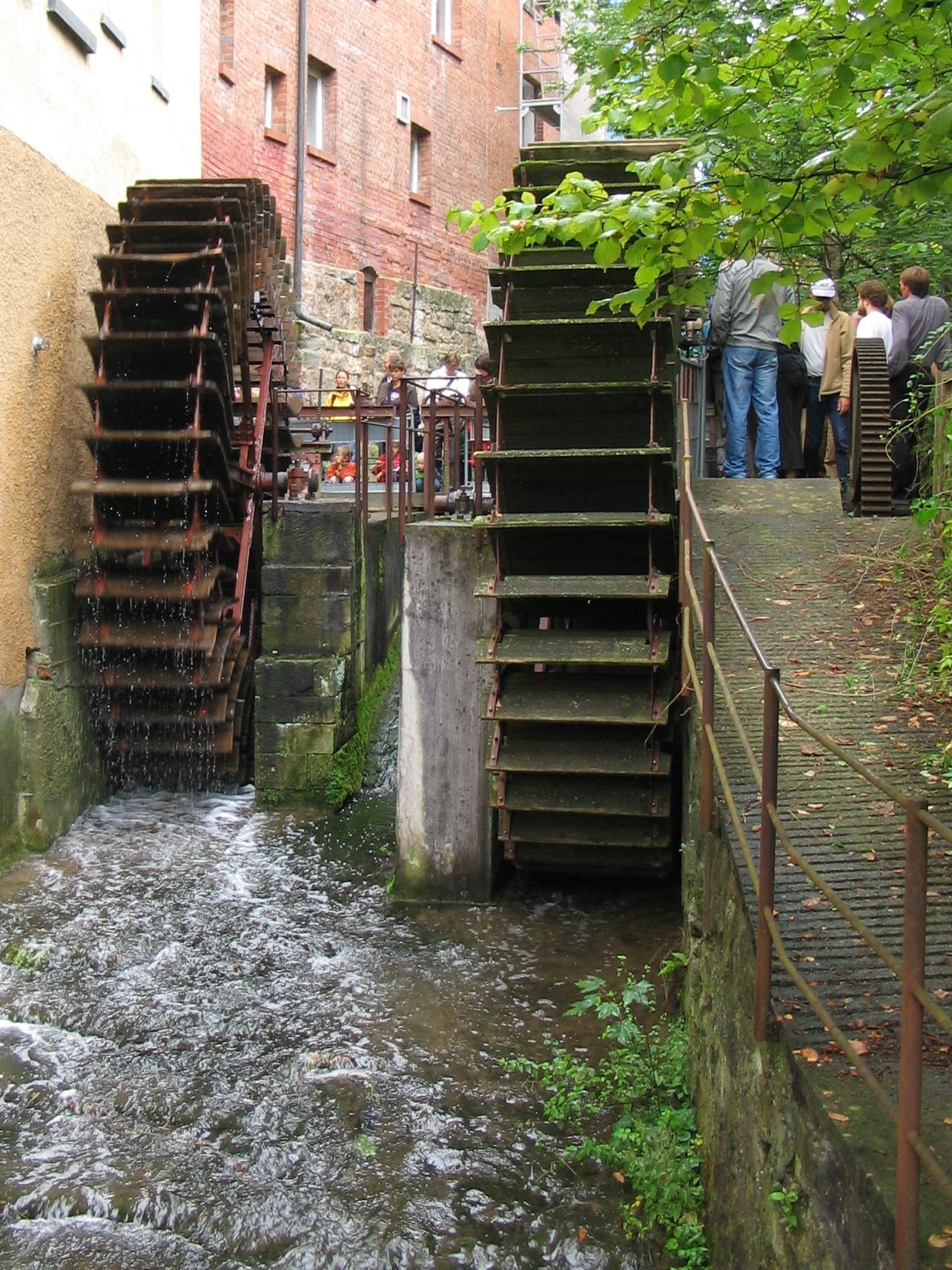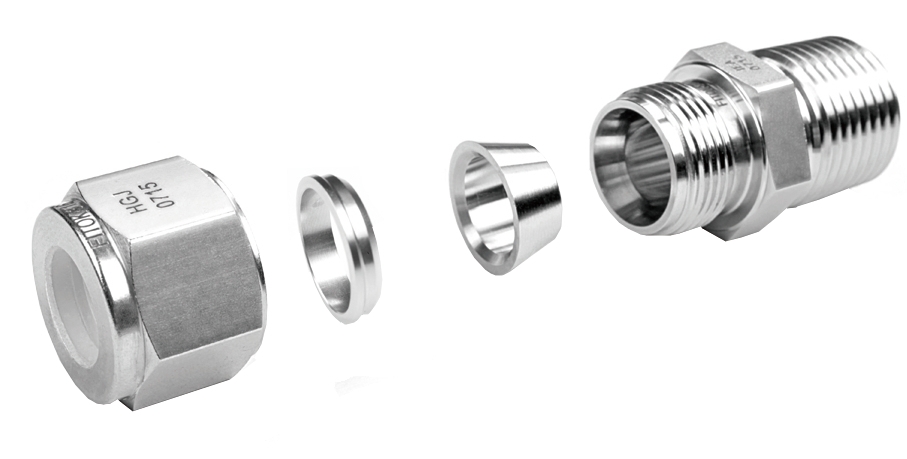|
National Pipe Thread
American National Standard Pipe Thread standards, often called national pipe thread standards for short, are United States national technical standards for screw threads used on threaded pipes and pipe fittings. They include both tapered and straight thread series for various purposes, including rigidity, pressure-tight sealing, or both. The types are named with a full name and an abbreviation, such as NPT, NPS, NPTF, or NPSC. MIP is an abbreviation for male iron pipe, and FIP is an abbreviation for female iron pipe. Outside North America, some US pipe thread sizes are widely used, as well as many British Standard Pipe threads and ISO 7–1, 7–2, 228–1, and 228-2 threads. Types The various types are each named with an abbreviation and a full name, as follows: Uses Threaded pipes can provide an effective seal for pipes transporting liquids, gases, steam, and hydraulic fluid. These threads are now used in materials other than steel and brass, including PTFE, PV ... [...More Info...] [...Related Items...] OR: [Wikipedia] [Google] [Baidu] |
Hydraulic
Hydraulics () is a technology and applied science using engineering, chemistry, and other sciences involving the mechanical properties and use of liquids. At a very basic level, hydraulics is the liquid counterpart of pneumatics, which concerns gases. Fluid mechanics provides the theoretical foundation for hydraulics, which focuses on applied engineering using the properties of fluids. In its fluid power applications, hydraulics is used for the generation, control, and transmission of Power (physics), power by the use of pressure, pressurized liquids. Hydraulic topics range through some parts of science and most of engineering modules, and they cover concepts such as pipe Volumetric flow rate, flow, dam design, fluidics, and fluid control circuitry. The principles of hydraulics are in use naturally in the human body within the vascular system and erectile tissue. ''Free surface hydraulics'' is the branch of hydraulics dealing with free surface flow, such as occurring in rivers ... [...More Info...] [...Related Items...] OR: [Wikipedia] [Google] [Baidu] |
ANSI
The American National Standards Institute (ANSI ) is a private nonprofit organization that oversees the development of voluntary consensus standards for products, services, processes, systems, and personnel in the United States. The organization also coordinates U.S. standards with international standards so that American products can be used worldwide. ANSI accredits standards that are developed by representatives of other standards organizations, government agencies, consumer groups, companies, and others. These standards ensure that the characteristics and performance of products are consistent, that people use the same definitions and terms, and that products are tested the same way. ANSI also accredits organizations that carry out product or personnel certification in accordance with requirements defined in international standards. The organization's headquarters are in Washington, D.C. ANSI's operations office is located in New York City. The ANSI annual operating ... [...More Info...] [...Related Items...] OR: [Wikipedia] [Google] [Baidu] |
Pipe (material)
Pipe(s), PIPE(S) or piping may refer to: Objects * Pipe (fluid conveyance), a hollow cylinder following certain dimension rules ** Piping, the use of pipes in industry * Smoking pipe ** Tobacco pipe * Half-pipe and quarter pipe, semi-circular ramps for performing skateboarding/snowboarding tricks * Piping (sewing), tubular ornamental fabric sewn around the edge of a garment * ''For the musical instruments'', see below Music * Pipe (instrument), a traditional perforated wind instrument * Bagpipe, a class of musical instrument, aerophones using enclosed reeds ** Pipes and drums or pipe bands, composed of musicians who play the Scottish and Irish bagpipes * Organ pipe, one of the tuned resonators that produces the main sound of a pipe organ * Pan pipes, see Pan flute, an ancient musical instrument based on the principle of the stopped pipe * Piped music, or elevator music, a type of background music * "Pipe", by Christie Front Drive from '' Christie Front Drive'', 1994 ... [...More Info...] [...Related Items...] OR: [Wikipedia] [Google] [Baidu] |
Lubricant
A lubricant (sometimes shortened to lube) is a substance that helps to reduce friction between surfaces in mutual contact, which ultimately reduces the heat generated when the surfaces move. It may also have the function of transmitting forces, transporting foreign particles, or heating or cooling the surfaces. The property of reducing friction is known as lubricity. In addition to industrial applications, lubricants are used for many other purposes. Other uses include cooking (oils and fats in use in frying pans and baking to prevent food sticking), to reduce rusting and friction in machinery, through the use of motor oil and Grease (lubricant), grease, bioapplications on humans (e.g., lubricants for Replacement joint, artificial joints), ultrasound examination, medical examination, and sexual intercourse. It is mainly used to reduce friction and to contribute to a better, more efficient functioning of a mechanism. History Lubricants have been in some use for thousands of year ... [...More Info...] [...Related Items...] OR: [Wikipedia] [Google] [Baidu] |
Burr (edge)
A burr is a raised edge or small piece of material that remains attached to a workpiece after a modification process. It is usually an unwanted piece of material and is removed with a deburring tool in a process called deburring. Burrs are most commonly created by machining operations, such as grinding, drilling, milling, engraving or turning. It may be present in the form of a fine wire on the edge of a freshly sharpened tool or as a raised portion of a surface; this type of burr is commonly formed when a hammer strikes a surface. Deburring accounts for a significant portion of manufacturing costs. In the printmaking technique of drypoint, burr, which gives a rich fuzzy quality to the engraved line, is highly desirable—the great problem with the drypoint medium is that the burr rapidly diminishes after as few as ten impressions are printed. Types There are three types of burrs that can be formed from machining operations: ''Poisson burr'', ''rollover burr'', and ''breako ... [...More Info...] [...Related Items...] OR: [Wikipedia] [Google] [Baidu] |
Plumber's Putty
PuTTY () is a free and open-source terminal emulator, serial console and network file transfer application. It supports several network protocols, including SCP, SSH, Telnet, rlogin, and raw socket connection. It can also connect to a serial port. The name "PuTTY" has no official meaning. PuTTY was originally written for Microsoft Windows, but it has been porting, ported to various other operating systems. Official ports are available for some Unix-like platforms, with work-in-progress ports to and , and unofficial ports have been contributed to platforms such as Symbian, Windows Mobile and Windows Phone. PuTTY was written and is maintained primarily by Simon Tatham, a British programmer. Features PuTTY supports many variations on the secure remote terminal, and provides user control over the SSH encryption key and protocol version, alternate ciphers such as Advanced Encryption Standard, AES, Triple DES, 3DES, RC4, Blowfish (cipher), Blowfish, Data Encryption Standard, ... [...More Info...] [...Related Items...] OR: [Wikipedia] [Google] [Baidu] |
Pipe Dope
Pipe dope is any thread lubricant, thread sealing compound, or anaerobic chemical sealant that is used to make a pipe thread joint leakproof and pressure tight. It is also referred to as "thread compound" or "pipe thread sealant." Although common pipe threads are tapered and therefore will achieve an interference fit during proper assembly, machining and finishing variances usually result in a fit that does not result in 100 percent contact between the mating components. The application of pipe dope prior to assembly will fill the minute voids between the threads, thus making the joint pressure tight. Pipe dope also acts as a lubricant and helps prevent seizing of the mating parts, which can later cause difficulty during disassembly. Composition A material safety data sheet reports that the "Permatex" 51D pipe joint compound contains kaolin clay, vegetable oil, rosin, ethanol, etc. The ingredients are designed to: # fill minute spaces between mating pipe fittings (kaolin), ... [...More Info...] [...Related Items...] OR: [Wikipedia] [Google] [Baidu] |
Thread Seal Tape
Thread seal tape (also known as PTFE tape, Teflon tape, or plumber's tape) is a polytetrafluoroethylene (PTFE) film tape commonly used in plumbing for sealing pipe threads. The tape is sold cut to specific widths and wound on a spool, making it easy to wind around pipe threads. Thread seal tape lubricates, allowing for a deeper seating of the threads, and it helps prevent the threads from seizing when being unscrewed. The tape also works as a deformable filler and thread lubricant, helping to seal the joint without hardening or making it more difficult to tighten, and instead making it easier to tighten. It also protects the threads of both pieces from direct contact with each other and physical wear. Typically the tape is wrapped on the male threads, in the same direction a female piece would be rotated to tighten. This method can be used to figure out tape wrapping direction regardless of which piece is fixed/stationary, or which side of the fixture the person is working from ... [...More Info...] [...Related Items...] OR: [Wikipedia] [Google] [Baidu] |
Compression Fitting
A compression fitting is a fitting used in plumbing and electrical conduit systems to join two tubes or thin-walled pipes together. In instances where two pipes made of dissimilar materials are to be joined (most commonly PVC and copper), the fittings will be made of one or more compatible materials appropriate for the connection. Compression fittings for attaching tubing (piping) commonly have compression rings, called ''ferrules'' (American English) or ''olives'' (British English), in them, and are sometimes referred to as flareless fittings. There are also flare fittings that do not require ferrules/olives. Compression fittings are used extensively in hydraulic, gas, and water systems to enable the connection of tubing to threaded components like valves and tools. Compression fittings are suited to a variety of applications, such as plumbing systems in confined spaces where copper pipe would be difficult to solder without creating a fire hazard, and extensively in hydrau ... [...More Info...] [...Related Items...] OR: [Wikipedia] [Google] [Baidu] |
Cast Iron
Cast iron is a class of iron–carbon alloys with a carbon content of more than 2% and silicon content around 1–3%. Its usefulness derives from its relatively low melting temperature. The alloying elements determine the form in which its carbon appears: Cast iron#White cast iron, white cast iron has its carbon combined into an iron carbide named cementite, which is very hard, but brittle, as it allows cracks to pass straight through; Grey iron, grey cast iron has graphite flakes which deflect a passing crack and initiate countless new cracks as the material breaks, and Ductile iron, ductile cast iron has spherical graphite "nodules" which stop the crack from further progressing. Carbon (C), ranging from 1.8 to 4 wt%, and silicon (Si), 1–3 wt%, are the main alloying elements of cast iron. Iron alloys with lower carbon content are known as steel. Cast iron tends to be brittle, except for malleable iron, malleable cast irons. With its relatively low melting point, g ... [...More Info...] [...Related Items...] OR: [Wikipedia] [Google] [Baidu] |
Bronze
Bronze is an alloy consisting primarily of copper, commonly with about 12–12.5% tin and often with the addition of other metals (including aluminium, manganese, nickel, or zinc) and sometimes non-metals (such as phosphorus) or metalloids (such as arsenic or silicon). These additions produce a range of alloys some of which are harder than copper alone or have other useful properties, such as strength, ductility, or machinability. The archaeological period during which bronze was the hardest metal in widespread use is known as the Bronze Age. The beginning of the Bronze Age in western Eurasia is conventionally dated to the mid-4th millennium BCE (~3500 BCE), and to the early 2nd millennium BCE in China; elsewhere it gradually spread across regions. The Bronze Age was followed by the Iron Age, which started about 1300 BCE and reaching most of Eurasia by about 500 BCE, although bronze continued to be much more widely used than it is in modern times. Because historica ... [...More Info...] [...Related Items...] OR: [Wikipedia] [Google] [Baidu] |







